The Latinx poster art of 70s LA was incredibly diverse, often inspired by the Chicano civil rights movement and ancient art from the Americas. One woman who kickstarted the movement is Sister Karen Boccalero, a nun and artist who had a dream of creating a community arts institution for Latinx art. In 1972, she founded Self Help Graphics, a graphic arts studio in East LA, which has been bringing a DIY ethos to poster art for over 40 years.
Now, some of the studio’s most iconic works are going on view as part of Arte Sin Fronteras: Prints from the Self Help Graphics Studio, a group exhibition opening October 27 at the Blanton Museum of Art in Austin. The artworks challenge traditional gender roles, give a voice to Chicanx and Latinx queer identities, and visualize migration and life at the US Mexico border.
Though most of the works are from the 1980s and 1990s, Self Help Graphics has worked with Latinx artists for 40 years, through artist residencies, teaching and training opportunities, and outreach to the community. The studio helped promote the voices of its artists during the Chicano civil rights movements in the 1970s, but it also connected the diaspora with their cultural roots. This wasn’t just through prints the studio has also created historic murals in the neighborhoods of east LA, and commissioned avant-garde performances by local artists.
Coinciding with Hispanic Heritage Month, the exhibition features over 70 works created between 1978 and 1997, drawn from a gift of around 350 prints given to the museum by Dr. Gilberto Cárdenas. These prints are what the museum’s director Simone Wicha calls “vibrant expressions of Latinx identity at a critical moment in history.” Here, co-curators Florencia Bazzano and Christian Wurst walk us through six key pieces in the exhibition.

Danza Ocelotl by Yreina D. Cervántez, 1983
“This work is a great example of how the studio has given a voice to the artists in the community. It was part of the first atelier in 1983. Cervántez is an artist who worked at Self Help Graphics and the Barrio Mobile Art Studio for many years and now is a professor at UC Santa Cruz. The program provided a collaborative community and training in printmaking that helped her shape her style. She has also participated in several Ateliers since then.
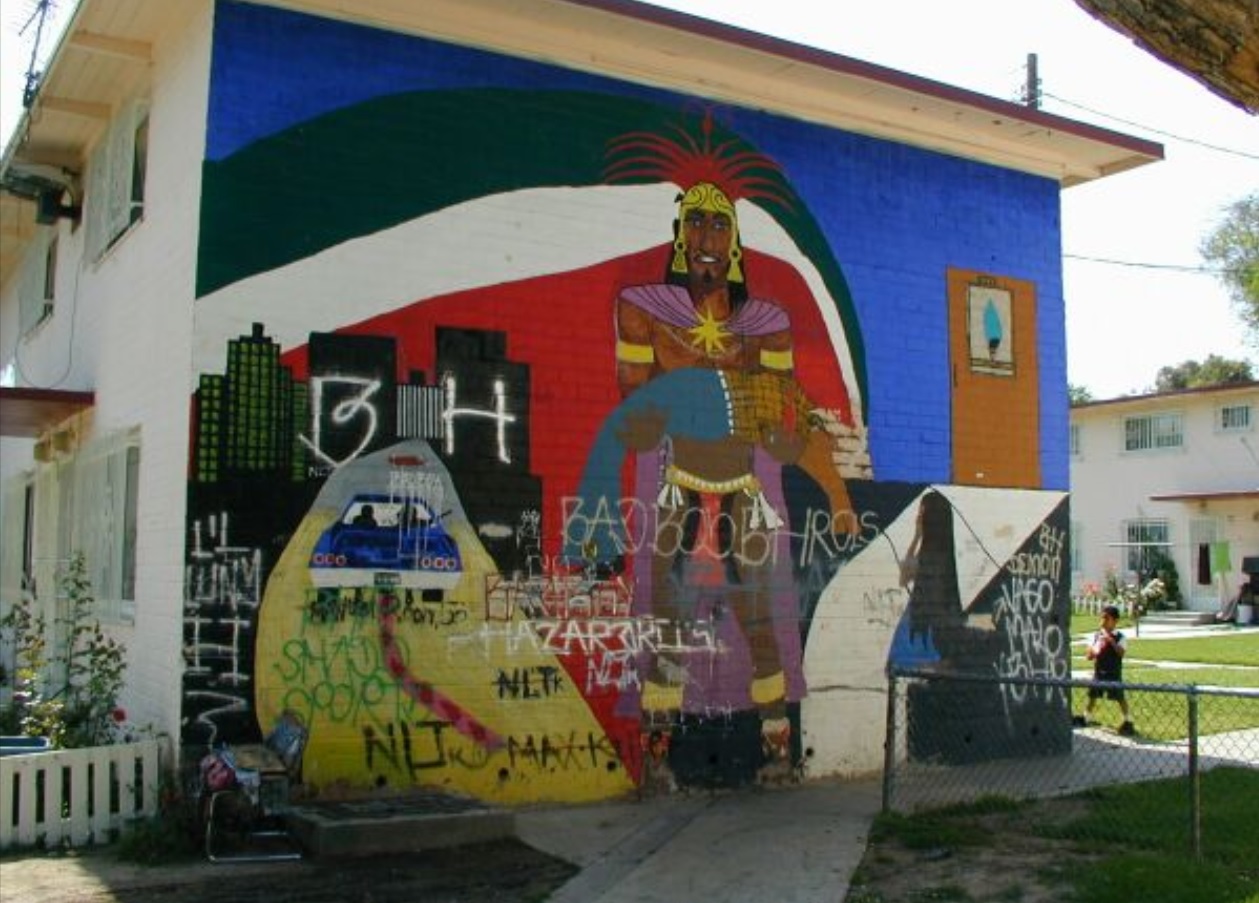
Barrio Flag by Manuel Cruz
“Cruz was a well-known muralist in Los Angeles. Barrio Flag is after a now-lost mural he painted in East LA back in 1993, as Self Help gave him the opportunity to make works that could disseminate to a wide audience, and not be subjected the whims of building owners and land developers.”
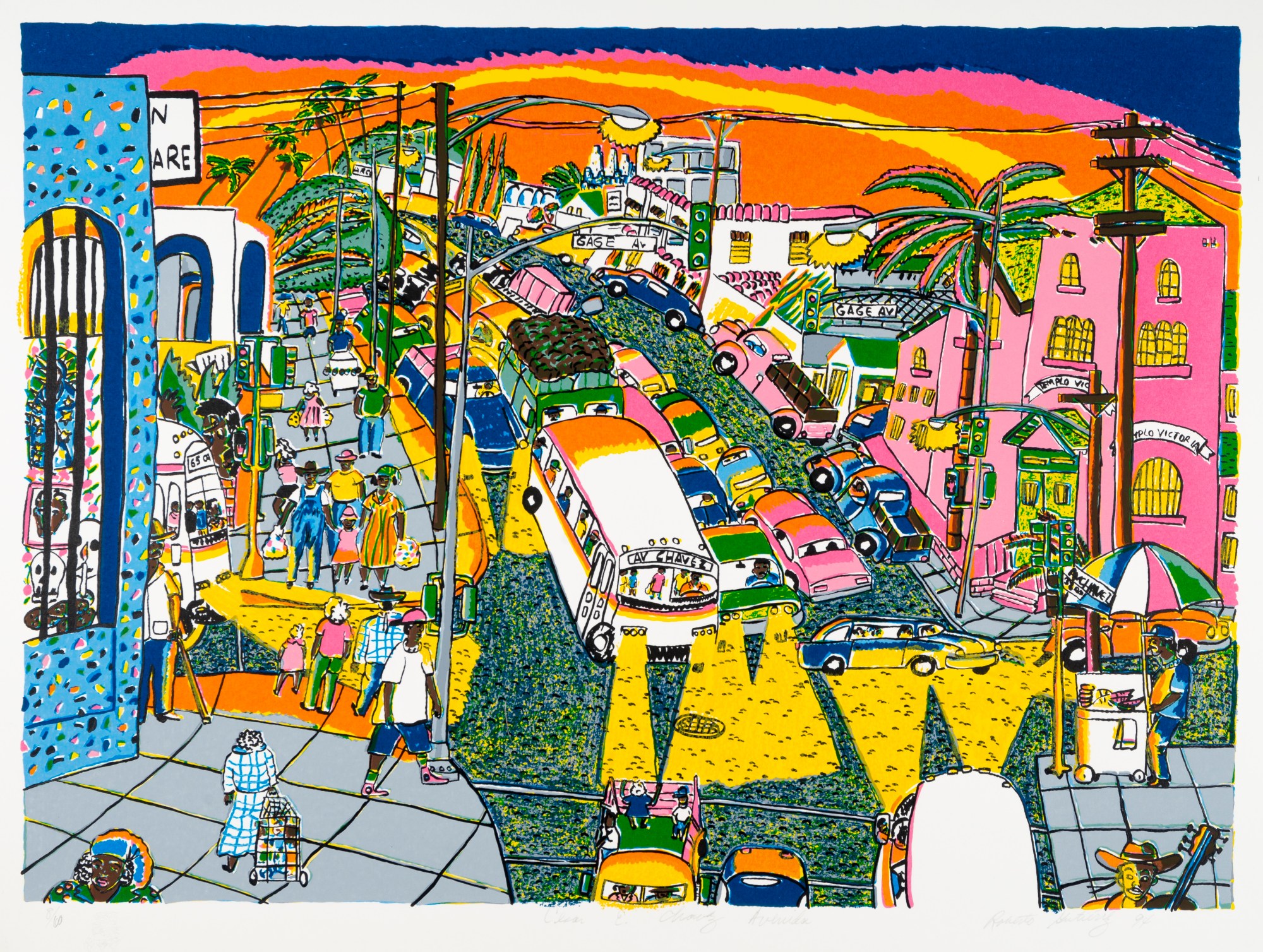
Cesar E. Chavez Avenida by Robert Gutiérrez, 1994
“In this piece, the artist is commemorating the change of the neighborhood’s main avenue from ‘Brooklyn’ to ‘Cesar E. Chavez’ Avenue in 1994. During the 1960s, this part of the city transformed from a predominantly Jewish to a Mexican American community and Cesar E. Chavez was a prominent Chicano civil rights leader. In the 1960s, co-founding what is now the United Farm Workers with Dolores Huerta, also, Self Help Graphics had its studio on that street.”
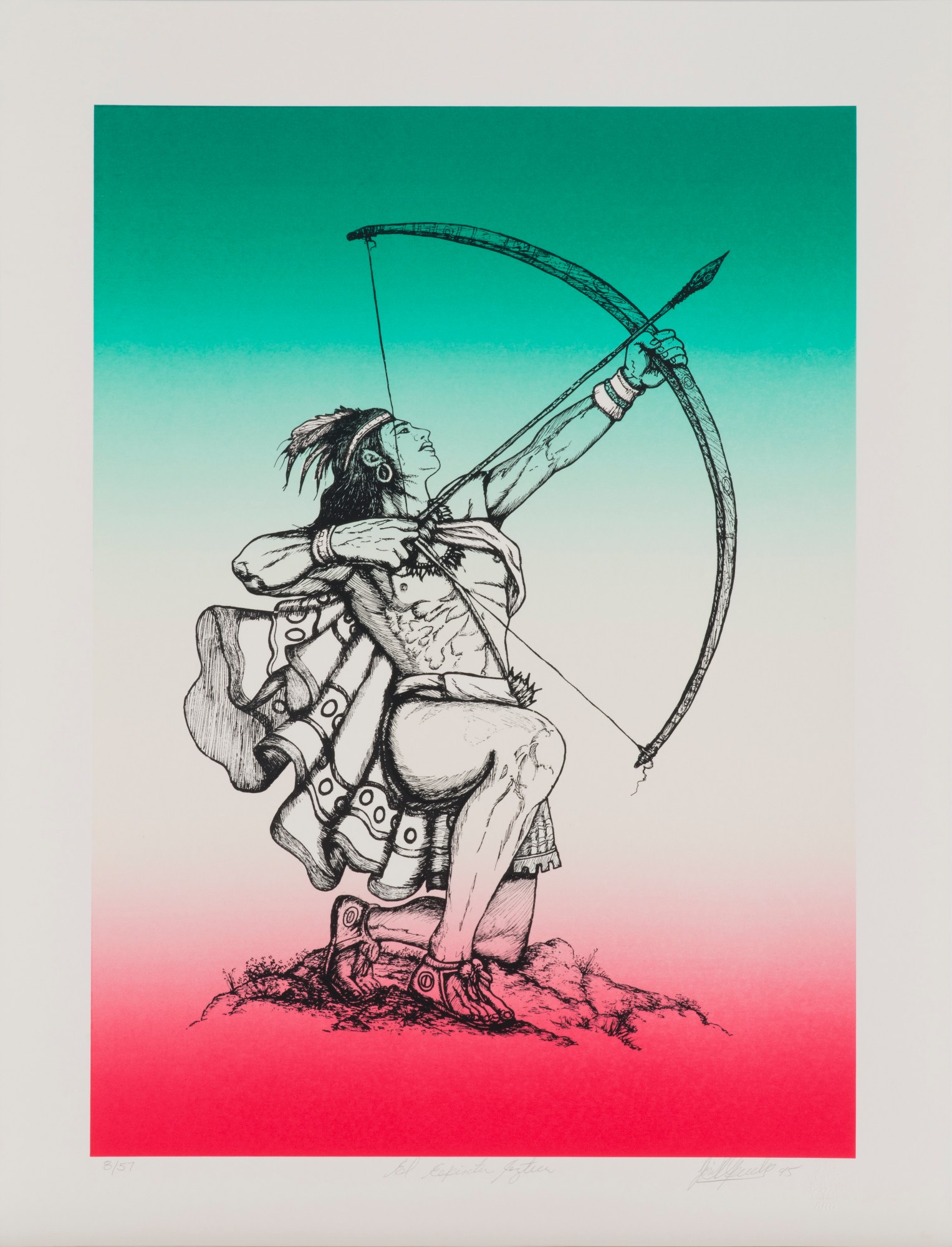
El Espiritu Azteca by José Alpuche, 1995
“El Espiritu Azteca is a perfect example of how Chicanx artists are inspired by Mesoamerican myths and histories. These pre-Hispanic traditions evinced a sense of pride in the achievements made by the artists’ ethnic and cultural forebears. The Aztec figure depicted in this print represents a warrior and archer sometimes identified by the name Ilhuicamina. In one ancient Mesoamerican myth, the warrior was challenged to shoot the sun with an arrow to win the hand of his beloved thus creating the sunset. Alpuche also references the work of Jesús Helguera, an academic painter who illustrated inexpensive Mexican calendars, helping disseminate ancient myths and folkloric scenes among Mexican Americans.”
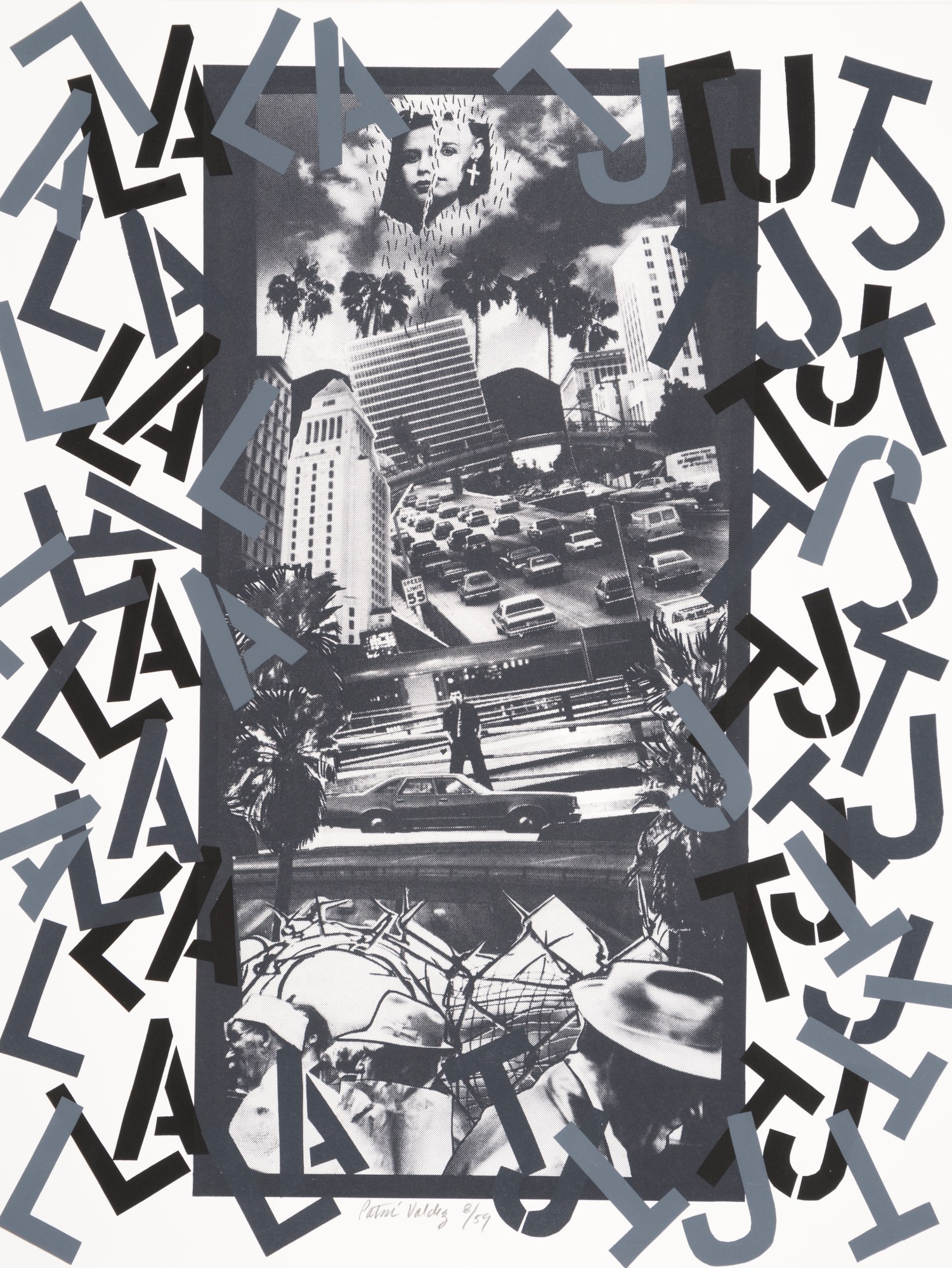
L.A./T.J. by Patssi Valdez, 1987
“Patssi Valdez’s print is referencing two cities closely tied to her identity—Los Angeles and Tijuana. A photographic portrait of the artist is split in two hovers over the cityscape. As an American-born citizen with Mexican ancestry, she is constantly pulled towards the border.”
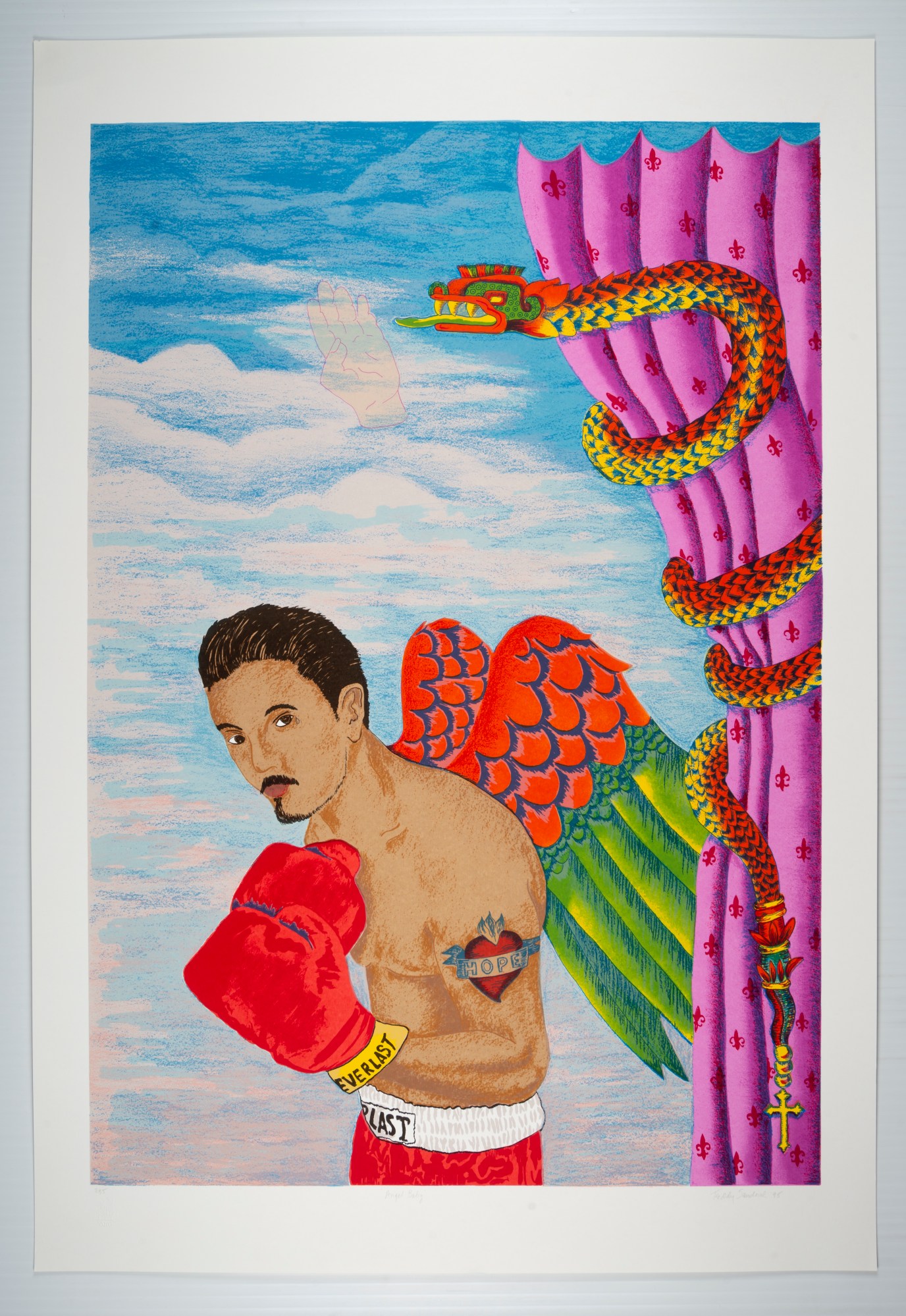
Angel Baby by Teddy Sandoval, 1995
“Teddy Sandoval was a gay Latino artist working in Los Angeles. He employed symbols from his Chicano background to address issues of sexual and ethnic identity. He’s also confronting issues that were affecting his community like the AIDS crisis. In Angel Baby, Sandoval presents a boxer as a guardian angel meant to protect against violence, AIDS, war and discrimination of all kinds.”
Arte Sin Fronteras: Prints from the Self Help Graphics Studio runs until January 12 at the Blanton Museum of Art in Austin, Texas.
